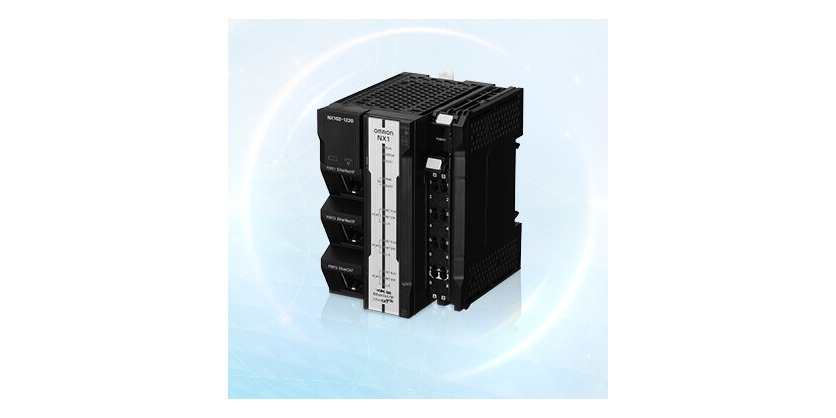The Power of OPC-UA in Industrial Automation
February 27, 2024

In the world of industrial automation, the need for seamless communication between devices and systems in paramount. This is where OPC-UA (Open Platform Communications United Architecture) comes into play. OPC-UA is an open and secure communication protocol that enables interoperability between different devices and software applications. In this blog post, Omron explores the significance of OPC-UA in manufacturing operations and how it has revolutionized the way data is transmitted and utilized in the industry.
State-of-the-Art OPC-Certified Product: Omron’s NX102 Machine Controller
One of the state-of-the-art OPC-certified products in the market is Omron’s NX102 Machine Controller. This robust controller combines safety, accurate motion control, and transparent control in a single device. With embedded Open Platform Communications United Architecture server functionality, the NX102 allows for open communication with field devices, ensuring that SCADA software communication needs are met. Its flexibility and ability to communicate on a wide range of industrial protocols make it suitable for both brownfield and greenfield facilities. The NX102 gets automation up and running quickly, providing healthy returns on capital investments for the plant floor.
Advancements in OPC-UA Acceptance/Implementation: Authentication and Encryption
Over the past five years, one of the most significant advancements in OPC-UA acceptance and implementation has been in the area of authentication and encryption. Open Platform Communications United Architecture requires credentials, making it an essential asset in addressing cyber vulnerabilities and preventing unauthorized access. With the increasing importance of data security and the rise of cyber-physical attacks, OPC-UA’s authentication and encryption capabilities have played a crucial role in its adoption and utility. The OPC UA Foundation has witnessed a steady growth in membership, indicating the growing recognition and trust in this technology.
Impact of OPC-UA in Manufacturing: Simplifying Connectivity and Integration
The proliferation of components from multiple suppliers in machinery has greatly benefited Open Platform Communications United Architecture. By allowing SCADA software communication, without the need for proprietary protocols, OPC-UA simplifies connectivity and integration in manufacturing operations. This openness has reduced complexity enabling users to adopt OPC UA technology more readily. As the industrial automation community embraces collaboration and interoperability, OPC UA sets a precedent for future innovations and industry standards.
OPC-UA and Industry 4.0: Enabling Efficient Data Transmission and Security
The advent of Industry 4.0 has further accelerated the use of Open Platform Communications United Architecture in manufacturing. As facilities strive to implement smart and connected systems, OPC-UA plays a crucial role in efficient data transmission, secure communication, and centralized control. By embedding OPC UA server functionality in flagship controllers, such as the NX102, Omron is aligning with the principles of Industry 4.0 and driving greater adoption of OPC UA. The efficiency and security offered by OPC UA make it an ideal choice for Industry 4.0 initiatives through integrating into Industrial Internet of Things (IIoT).
Future Innovations and the Role of OPC-UA in Manufacturing Operations
Looking ahead, future innovations in data security will continue to shape the use of Open Platform Communications United Architecture in manufacturing operations. As more data becomes confidential and regulations tighten, OPC-UA’s secure communication and encryption capabilities will become even more critical. The OPC UA Foundation is committed to advancing data security and protecting users’ valuable information as it is transported to central databases. The journey of OPC-UA is an ongoing one, and the industrial automation community eagerly awaits the future developments and advancements in this technology.
Embracing the Future of Industrial Automation with OPC-UA
Open Platform Communications United Architecture has emerged as a powerful and indispensable tool in the world of industrial automation. Its open and secure communication protocol has revolutionized the way devices and systems interact, simplifying connectivity, improving efficiency, and enhancing data security. With state-of-the-art OPC-certified products like Omron’s NX102 Machine Controller, the industry is witnessing the tangible benefits of OPC-UA in real-world applications. As we embrace the future of industrial automation, OPC-UA will continue to play a pivotal role in driving innovation, collaboration, and efficiency in manufacturing operations.
More Information
Related Story
Sealing and Material Coating in EV Manufacturing – How Omron’s Technologies Refine Quality
When it comes to electric vehicle or EV manufacturing assembly, meeting downstream customer demand for vehicle delivery while maintaining quality expected by downstream customers in the lite vehicle domain is the name of the game. With Omron’s EV sub assembly services, you can streamline your production and improve the quality of your EV parts. The source of this capabilities is the inherent automation flexibility built into Omron’s all-in-one automation platform which bridges the production gap between brownfield facilities which are starting EV production and new EV greenfield facilities.



